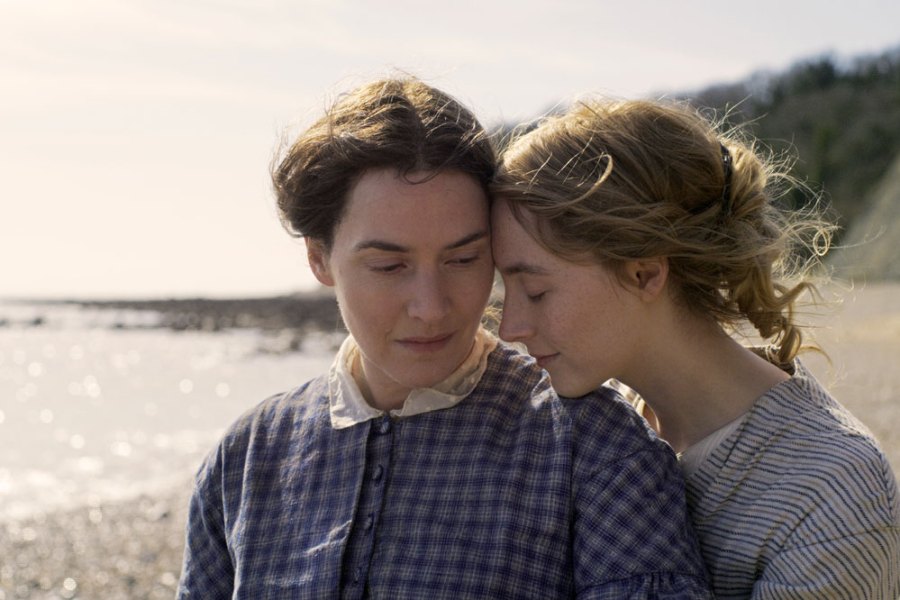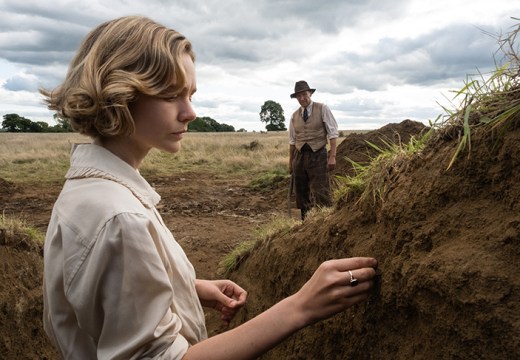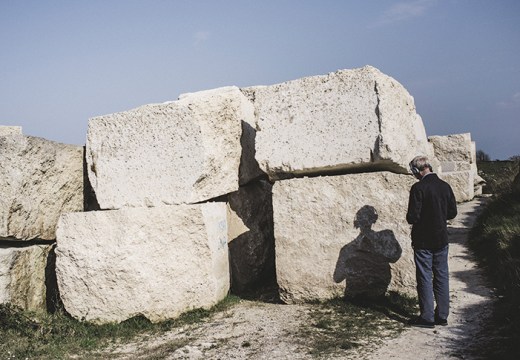The cliffs at Lyme Regis are a darkly menacing presence, layers of muddy grey-blue shale alternating with rib-like lines of pale grey limestone. Buried within this shifting, unstable mass – landslides are a constant danger here – are the remains of fantastic creatures from the swamps of prehistory. By far the most famous of these is a crocodile-like fossil discovered in 1811 by a 12-year-old girl called Mary Anning. Francis Lee’s new film, Ammonite, imagines what might have happened to that little girl when she grew up.
The historical Anning was a brilliant palaeontologist. She not only collected, prepared and sold fossils, but also studied their anatomy and was in regular communication with the great (male) scientific figures of the day. Ammonite opens with a shot of an unnamed woman scrubbing a floor while a group of men brush past, intent on placing Anning’s creature – now called an Ichthyosaur – on to a plinth. A hand reaches out and replaces the label bearing Anning’s name with that of the man who presented it to the museum. As in his previous film, the highly acclaimed God’s Own Country, Lee often eschews dialogue, relying instead on the wonderfully expressive faces of his leads – a superb Kate Winslet (Mary Anning) and Saoirse Ronan (Charlotte Murchison) – and on the concise, telling image. Here, Lee neatly summarises Anning’s problem. As a poor, self-taught working-class woman from a family of religious dissenters, Anning was largely excluded from the 19th-century scientific establishment. Even as she rescued her fossils from certain oblivion in the sea, she herself was constantly being erased from the scientific and historical record – a process that would continue for many years after her death.
In Lee’s slow and stately vision, 19th-century Lyme is a bleak place. Beautifully shot by cinematographer Stéphane Fontaine, this is a film for those who revel in the out-of-season resort aesthetic. Beaches are windswept, seas tumultuous, houses dark and dirty, lit by guttering candles. Winslet’s hands are permanently red and chapped, ingrained with dirt. The camera follows closely as she scales the perilously shifting, muddy cliffs in search of fossils, skirts tucked up to reveal a pair of men’s trousers, or sits in her cold, cramped shop, painstakingly preparing specimens for sale.

Fossil-fuelled. Photo: Agatha A. Nitecka/RÅN studio
Enter oily gentleman-geologist Roderick Impey Murchison (James McArdle) and his wife Charlotte. Murchison has come for a lesson in fossiling but soon proposes that Anning should become a companion and instructor for his ailing wife while he travels abroad. Charlotte – pale, wan, silent – appears to be suffering from depression, possibly after the death of a baby. Sea air and bathing have been recommended. Fossiling could be an interesting hobby. At first the women are united only by mutual antipathy but after some slightly contrived plotting involving a fever – though arguably no worse than Jane Austen indulges in during Persuasion, also set in Lyme – dislike turns to regard, then passion.
This is a creative reimagining of the life of Mary Anning rather than a biopic; the romantic storyline and Anning’s sexual orientation are speculation. Lee is certainly under no obligation to stick to historical sources but, considering the film’s concern with Anning’s status as a scientist, the characterisation of Charlotte Murchison as a geological novice is perhaps regrettable. In reality it was Murchison who introduced her husband to geology, and together they undertook many scientific expeditions. Were they working today, she would certainly be cited as co-author on his geological papers. It is a little sad that a film promoting one woman’s scientific reputation does so at the expense of another’s.
That concern aside, one of the great pleasures of Ammonite is watching Anning and Murchison slowly unbend towards one another, each growing in the other’s presence. This is a love story, a film that draws the shifting power dynamics of a relationship. It also asks what it is that ultimately gives meaning to our lives: romantic love, companionship, the bearing of children, the dignity of work? Lee then sets all of this against a backdrop of rock and water, light and dark, the glimpse of something like eternity that a fossil affords.
In one lovely moment towards the end of the film Winslet’s Anning stands in a gallery of the British Museum in front a row of portraits of important men. She moves her head slightly, blocking one of the painted faces. With her own strong features momentarily framed by the gold surround, the film’s opening act of erasure is symbolically reversed. Mary Anning assumes her rightful place.
Ammonite is currently available to stream.
Unlimited access from just $16 every 3 months
Subscribe to get unlimited and exclusive access to the top art stories, interviews and exhibition reviews.














![Masterpiece [Re]discovery 2022. Photo: Ben Fisher Photography, courtesy of Masterpiece London](http://www.apollo-magazine.com/wp-content/uploads/2022/07/MPL2022_4263.jpg)
It’s time for the government of London to return to its rightful home